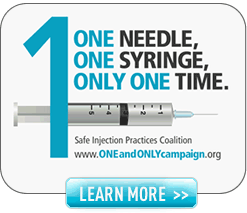
Lauren Lollini is a patient safety advocate who has been integral in changing laws to keep patients safe as well as a member of the Drug Diversion Prevention Committee.
My thanks is not just for the article, but for the work these and others do daily to help keep patients like me safe. If not for the heads up intervention by the CDPHE in April of 2009, I truly believe that many more people would have experienced what I and 2 dozen or so others had. The outbreak would have infected many more patients who would have been put in harms way by the actions of a drug diverting surgical tech. Almost 6000 letters went out in the summer of 2009 informing patients of their possible Hepatitis C infection.
I was not one of the persons getting a letter because by the time the source was isolated and put in the hands of law enforcement, I was already 3 months into my HCV struggle. So the news, when it broke, was not news to me as I was one of the two patients originally identified and questioned by the CDPHE. Neither of us had any prior exposure or risk factors to HCV, but we did have surgeries a day apart at the same hospital.
As the turmoil of an outbreak unfolds, you have very little understanding of the role these state health and CDC officials have in the detailing of source and thus limiting risk. For me, it was not until years later, during my interactions helping to educate about drug diversion that I would get a full explanation of events. And I have not stopped being grateful to them since.
But an outbreak like the one in Colorado could have been prevented. It did not need to happen. The system to keep narcotics under control either behind a lock or in the possession of an anesthesiologist was broken. And it took this scrub tech one day to find the flaws in the system and exploit them.
Drug diversions happen everyday in healthcare facilities throughout the country. Not all do damage as in the Colorado outbreak, still they need to be acknowledged and deterred. It speaks to the need for continued and improved surveillance. But more importantly, it speaks to the need for possible diversions to be caught prior to patient harm. It speaks to individual healthcare facilities getting their systems in line so no one slips through the cracks. This article defines the need for a more systematized approach. Drug diversion is not a law enforcement issue. It is a healthcare issue. By the time the epidemiologists are called, things have already gone too far.
So thank you to the team for their tremendous efforts to outline the issues surrounding this outbreak. It supports the work myself and those on the Drug Diversion Prevention Committee, anchored by HONOReform, have been striving for the last year or so. It shines a very bright light on a very dark issue.
For more information on this journal article or to find out how you might help in our efforts to eliminate drug diversions, please contact HONOReform at www.honoreform.org.

